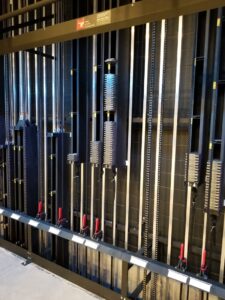
A theatre or stage rigging system is the backbone of any good production. Rigging equipment supports elements including curtains, scenery, acoustic equipment and lighting. It’s essential to secure those suspended elements to protect performers, crew and audience members and avoid property damage.
Scheduling annual rigging inspections helps you stay on top of equipment maintenance and maintain a secure performance space.
Ensure Performer and Crew Safety
There are many moving parts on and above a stage, so it’s crucial to keep theatre rigging in tip-top shape. Ropes, cables, winches and pulleys sustain wear over time, potentially compromising the integrity of the equipment. Crew, staff and audience members may be at risk for injury if your system fails.
An inspection includes a visual assessment for signs of corrosion and mechanical faults. A professional inspector knows what to look for and can advise you about which rigging elements need replacing to enhance safety. Identifying minor issues before they become major problems can reduce the risk of injury caused by falling objects.
Prevent Equipment Failure
Theatre and stage rigging inspections include functionality checks to review how well winches, motors and counterweights perform. An inspector may also conduct a load test to simulate performance conditions and determine if there are any inefficiencies or weaknesses in the rigging system.
Taking a proactive approach to rigging maintenance and adhering to a consistent inspection schedule can prevent unexpected malfunctions during performances. Equipment failure may also result in property damage that requires costly repairs or replacements.
Compliance with Industry Standards
The American National Standards Institute (ANSI) and the Entertainment Services and Technology Association (ESTA) have strict standards for manual and motorized rigging.
ANSI breaks inspections into two categories:
Level 1: This yearly assessment includes visual and operational inspections to verify ropes, cables, hardware, fly systems and anchor points are in proper working order. To pass a Level 1 inspection, you should also have proper signage for system weight capacities and safety warnings. An inspector will also review your records and maintenance logs to verify that you’ve kept detailed records of system repairs and replacements. You’ll receive a report on the condition of your theatre or stage rigging and recommended upgrades.
Level 2: This type of inspection is done every five years or if you’ve had a new rigging system installed. It involves surveying the same components at a Level 1 assessment. However, a Level 2 inspection includes a more in-depth system appraisal to determine if there are internal flaws or potential failure points that might not be found in a Level 1 inspection. An inspector will conduct a thorough safety evaluation and review system integration.
Extend the Rigging Equipment Lifespan
Rigging equipment operates under strain and friction, which can wear down components over time. An inspection provides you with insight into the state of your equipment so you can make changes to improve its longevity.
An inspector can discuss maintenance practices to protect rigging components, including
- Lubricating pulleys, winches and sheaves
- Tightening connection points
- Calibrating hoists and other mechanical equipment
- Storing rigging properly
Theatre and Stage Rigging Inspections from Tiffin Scenic Studios
When was the last time you had your theatre or stage rigging inspected? If you’re unsure, contact the expert team at Tiffin Scenic Studios to schedule a comprehensive safety inspection.